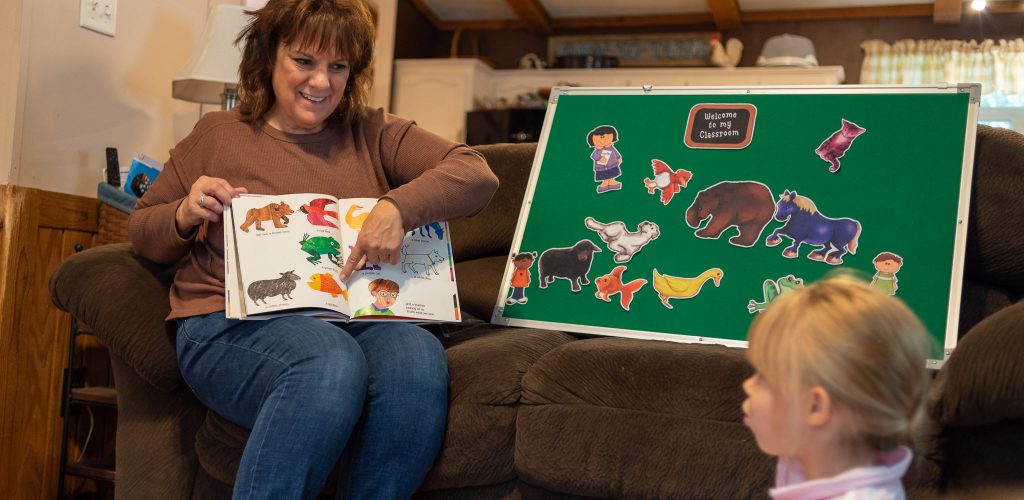Chrissie shared her story as part of MECEP’s State of Working Maine 2022 report. Click here to view the full report, as well as other workers’ stories.
Chrissie Davis has operated nationally accredited Bouncing Bubbles Child Care from her Skowhegan home for 21 years. She independently serves six children ages 6 weeks to 12 years old before, during, and after school hours all year long.
“Eleven-hour days are the norm, with no breaks. I open at 6:00 a.m. to accommodate families that need to be at work by 6:30 a.m., and often have a child or two until 5:00 p.m. The closest thing I have to a break is naptime, but I use that time to catch up on paperwork and Zoom meetings.
During the pandemic, I calculated my hourly wage. I was disgusted to learn that it was $10.93 per hour, which didn’t even include evening or weekend trainings, meetings, or running errands for the business.
I try to keep my rates as low as possible because I know that child care is a huge expense for families. I’ve seen the stress on families increase significantly over the years, which creates added stress for the kids. I’ve seen families who don’t qualify for financial assistance struggle to decide whether both parents should continue to work due to the rising cost of child care. I’ve also seen single-parent families completely exhausted with the pressures they’re under. At the same time, I need to be able to survive financially.

Every day, child care facilities close because they can’t afford to stay open and because they can make more money working fewer hours with less responsibility at a box store. If I had to close, six businesses would be affected due to six employees’ lack of child care.
Child care providers should be making a wage comparable to public school teachers. Our hours are longer, we don’t have benefits, and we not only teach, but also serve as the cook, nurse, administrator, janitor, and more. In a perfect world, I would receive a thriving wage rather than a surviving wage, and that burden would not be on parents to pay.”




